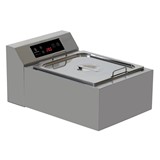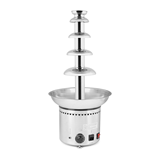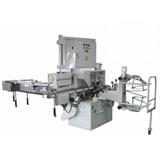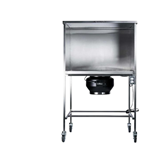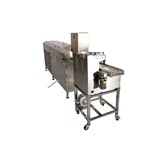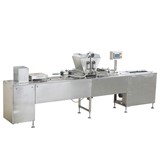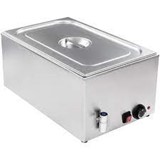Your complete buying guide to chocolate tempering machines in Australia. Compare models, get expert tips, and find the best machine for artisan or commercial use.
Key takeaways
- Prices: Small commercial chocolate tempering machines in Australia start from $3,000 to $6,000, mid-range units from $7,000 to $15,000, and fully automatic industrial models can cost $20,000 to $60,000+.
- Types: Choose between manual, semi-automatic, and fully automatic machines—automatic units reduce labour needs by up to 50% for large-scale operations.
- Capacity: Entry-level machines temper around 5–10kg/hour, while industrial models can process over 100kg/hour.
- Financing: Equipment finance options allow monthly repayments from $300–$900/month for machines up to $30,000, depending on credit.
- Compliance: Machines must comply with Food Standards Code – Standard 3.2.3 (Food Premises and Equipment) and may need electrical certification (RCM marking).
- Maintenance: Regular cleaning and calibration help maintain output quality and avoid chocolate bloom; servicing is typically required every 6–12 months.
- Warranties: Warranties range from 1 to 3 years; always check local support availability.
Introduction
Whether you're a chocolatier, bakery owner, café operator or confectionery manufacturer, investing in the right chocolate tempering machine is key to consistent, glossy, and snap-perfect chocolate.
This buying guide walks you through everything Australian buyers need to know—from machine types, prices and operations, to maintenance, financing, and compliance. We’ll also answer common questions and share real-world costs and considerations so you can make a confident, informed decision.
Types of chocolate tempering machines
1. Manual tempering machines
- Suitable for small operations and artisan chocolatiers.
- Require manual intervention for temperature control and mixing.
- Pros:
- Low upfront costs
- Greater control for experienced chocolatiers.
- Cons:
- Time-consuming.
- Labour-intensive.
2. Semi-automatic tempering machines
- Combine automated temperature control with some manual mixing or dispensing.
- Common uses:
- Cafés, boutique chocolatiers, bakery chains.
- Capacity:
- Typically 10–20kg/hour.
- Typically 10–20kg/hour.
3. Fully automatic tempering machines
- Offer continuous tempering, precise temperature control, and automatic dispensing.
- Common uses:
- Commercial factories and high-volume operations.
- Capacity:
- From 30kg/hour to 100+kg/hour.
- Key features:
- Integrated enrobing systems.
- Digital temperature displays.
- Pre-programmed tempering cycles.
Chocolate tempering machine prices in Australia
Here’s a breakdown of what you can expect to pay for chocolate tempering machines in Australia in 2025:
- Manual tabletop machines typically cost between $3,000 and $6,000. These are best suited for artisan chocolatiers or small-batch producers who don’t require high-volume output or automation.
- Semi-automatic machines generally range from $7,000 to $15,000. These offer automatic temperature control but still require some manual input, making them ideal for medium-sized bakeries, patisseries, and specialty chocolate shops.
- Fully automatic tempering machines start at around $20,000 and can go up to $35,000, depending on capacity and features. These are designed for commercial operations that need efficiency and consistent output with minimal hands-on labour.
- Industrial-grade automatic systems, often used in large-scale confectionery manufacturing, can cost anywhere from $40,000 to over $60,000. These machines typically include continuous tempering, enrobing attachments, and higher hourly capacity.
How chocolate tempering machines work
Chocolate tempering machines follow a process of heating, cooling, and reheating chocolate to precise temperatures that allow stable crystal formation (Type V crystals), giving chocolate its glossy finish and perfect snap.
Steps involved:
- Melting phase – chocolate is heated to around 45–50°C.
- Cooling phase – cooled down to 27–28°C.
- Reheating – brought back to working temperature (around 31–32°C for dark chocolate).
Modern machines automate this cycle using:
- Thermocouples or digital thermostats.
- Agitation paddles.
- Flow control and continuous mixing.
Maintenance and cleaning
Proper maintenance ensures consistent product quality and extends machine lifespan.
Routine maintenance tips:
- Daily cleaning: Remove all chocolate residues using food-safe cleaners.
- Weekly checks: Inspect sensors, paddles, and belts for wear.
- Quarterly servicing: Recalibrate temperature sensors and inspect the cooling system.
- Professional servicing: Every 6–12 months, especially for automatic systems.
Common parts and replacements
Key components include:
- Heating elements
- Cooling compressors
- Scrapers/paddles
- Thermostats
- Conveyor belts or enrobing lines (for integrated systems)
Most suppliers offer spare parts or servicing contracts. Expect replacement part costs to range from $200 to $1,500, depending on complexity.
Financing your chocolate tempering machine in Australia
Many Australian suppliers and lenders offer equipment finance for chocolate tempering machines.
Financing options:
- Chattel mortgage
- Equipment lease
- Rent-to-own
Example finance scenario:
- $15,000 semi-automatic machine
- 5-year loan term
- Interest rate: 7%
- Estimated repayments: $297/month
Warranties for chocolate tempering machines
Warranties are a key consideration when purchasing a chocolate tempering machine in Australia. Here's what you can generally expect in terms of warranty coverage across different machine types:
- Manual and tabletop models often come with a 1-year limited warranty, covering defects in materials and workmanship. Some entry-level models may only offer 6 months of coverage, especially from lesser-known or imported brands.
- Semi-automatic machines typically include a 1 to 2-year warranty on major components, including heating elements and control boards. Reputable suppliers may also offer optional extended warranty plans for added peace of mind.
- Fully automatic and industrial machines generally offer 2 to 3 years of warranty coverage, particularly from European or high-end manufacturers. These warranties often include on-site servicing or access to certified technicians within Australia.
- Parts and labour warranties can vary – some brands offer full coverage, while others limit support to parts only. Always clarify whether technician call-outs and transport are included.
Installation and Fit-Out Considerations
- Bench space:
- Tabletop machines require around 600mm x 600mm, while floor-standing models need at least 1m².
- Power requirements:
- Most machines use 230V (single-phase). Larger units may require 3-phase power, so confirm your facility's electrical setup.
- Ventilation:
- Ensure the machine is placed in a well-ventilated area to avoid overheating, especially if it has cooling systems.
- Floor drainage:
- Consider installing floor drainage to manage spills or washdowns, especially for larger-scale operations.
- Professional installation:
- Check if installation is included in the price or if it's recommended to use a professional to set up the machine properly.
Compliance and certification in Australia
Before buying, ensure your machine complies with relevant Australian standards:
Key compliance considerations:
- Food Safety Standards (Standard 3.2.3): Equipment must be easy to clean, non-toxic, and corrosion-resistant.
- Electrical compliance: Machines should carry an RCM (Regulatory Compliance Mark) for electrical safety.
- Import certification: If buying from overseas, confirm local voltage compatibility (Australia uses 230V/50Hz) and plug types.
Health and Safety Regulations
- Food contact materials:
- Ensure the machine complies with FSANZ standards for food safety, with food-grade materials like stainless steel.
- Insulated surfaces and guards:
- Machines should have insulated surfaces and safety guards to prevent burns or injuries.
- Easy-clean designs:
- Look for machines with removable parts and smooth surfaces to facilitate cleaning and reduce contamination risks.
- Electrical compliance:
- Verify compliance with AS/NZS 60335.1 and relevant Australian electrical safety standards.
- Supplier documentation:
- Ask for certification of compliance with safety and food standards before purchasing.
Training and Support
- Initial training:
- Many suppliers offer setup training, which is often included in the price. For larger machines, onsite training may be necessary.
- User manuals and video guides:
- Ensure your supplier provides clear manuals and video guides for efficient onboarding.
- Ongoing support:
- Choose suppliers with local service teams or remote diagnostics for quick problem resolution.
- Proficiency:
- With proper training and support, staff can become proficient in using the machine in a few days.
Common questions from chocolate tempering machine buyers
1. How do I know what size machine I need?
- Estimate your chocolate output per day. A 10kg/hour machine may suit small chocolatiers, while larger businesses should aim for 30kg/hour+.
2. Can I temper different types of chocolate with one machine?
- Yes, but you'll need to clean the machine thoroughly between batches and adjust the temperature settings. Some models allow preset programs for dark, milk, and white chocolate.
3. What is chocolate bloom, and how can I prevent it?
- Chocolate bloom refers to white streaks or spots caused by fat or sugar crystals rising to the surface. It's usually due to improper tempering or temperature fluctuations—proper machine use and storage solve this.
4. Should I buy locally or import?
- Local suppliers provide better warranty support and easier servicing, while imports (e.g., from Italy or Belgium) may offer more features. Consider total cost including freight, GST, and servicing.
5. Can I lease a machine instead of buying outright?
- Yes. Many suppliers and finance brokers in Australia offer lease-to-own options, particularly for machines under $30,000.
Final tips for buyers
- Test before buying: Ask for a product demo or sample run from the supplier.
- Read reviews: Look for feedback from other Australian buyers.
- Buy for future growth: Choose a machine that can scale with your business.
Conclusion
Choosing the right chocolate tempering machine in Australia requires careful planning around your production needs, budget, and operational scale. From pricing and machine types to warranties, financing, and compliance, this guide has covered all the essentials.
For most small-to-medium businesses, a semi-automatic machine between $7,000 and $15,000 offers a strong mix of capability and affordability. For large commercial kitchens or manufacturers, investing in a fully automatic model above $30,000 delivers serious time and labour savings.
Take the time to evaluate your needs, inspect warranty and compliance details, and consider financing to help smooth your cash flow.


